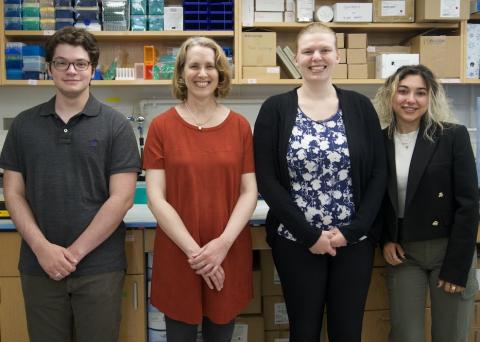
In the paper, McLaughlin described how to “test potential stroke treatments in a dish” using cortical spheroids. A flagship product of the Hoffman-Kim lab, cortical spheroids are three-dimensional spheres of rodent brain cells no bigger than the tip of a mechanical pencil. Casually referred to within the lab as “mini-brains,” cortical spheroids model actual brains in that they have the same cell types, neural communication, tissue stiffness and cell density. But what makes them different from true brains is an added boon to researchers: their tiny size and how rapidly they mature means the lab can make, maintain and conduct experiments on thousands of mini-brains at a time, quickly and cost-effectively.